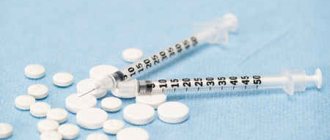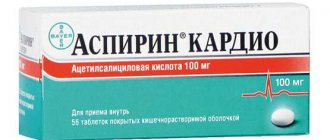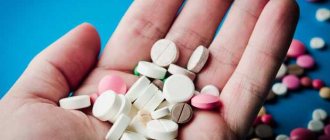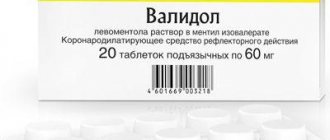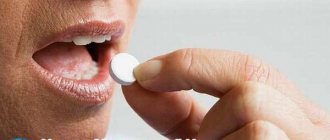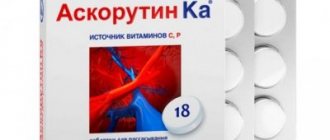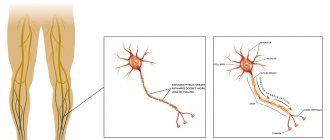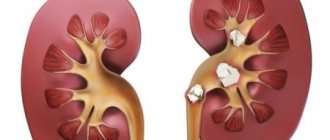Updated: 08/04/2019 18:11:07
Expert: Lev Sagalovich
“A person does not choose his illness, but he chooses stress - and it is stress that chooses the disease” Irvin Yalom.
Thanks to the achievements of modern medicine, a person can choose medicine instead of stress - and avoid illness. We will talk about anxiolytics - drugs that relieve feelings of anxiety and fear, calm you down and give the body a resource to fight stress. Well-known representatives of this group are Afobazol and Grandaxin. Both remedies successfully cope with neuroses and do not cause drowsiness, weakness or apathy. They differ in composition and principle of action, are prescribed according to different schemes and have their own scope of application. Let's tell you what the difference is between anxiolytics.
Let's compare the composition of the drugs
Afobazole and Grandaxin belong to the group of daytime anxiolytics (tranquisizers). They do not interfere with leading a full social life and do not cause drowsiness during the day. Detailed characteristics of the drugs are presented in the table.
| The drug and its characteristics | Afobazole | Grandaxin |
| Active substance | Fabomotizol | Tofisopam |
| Release form | Pills | Pills |
| Dosage | 5 and 10 mg | 50 mg |
| Vacation at the pharmacy | Over the counter | On prescription |
| Manufacturer | OTCPharm Pao (Russia) | "Egis" (Hungary) |
| Price | 500-700 rubles for 60 pieces | 700-800 rubles for 60 pieces |
Please note: Afobazole can be purchased without a doctor's prescription. This does not mean that the drug should be taken uncontrolled, but only indicates that it is recognized as relatively safe.
What is it prescribed for, indications for use
The drug is used in cases of:
- 1. During menopause in women
- 2. For panic attacks
- 3. After a binge
- 4. For a hangover
- 5. For weight loss
- 6. For dizziness
- 7. For social phobia
The drug has a large number of synonyms.
The composition is a tranquilizer?
The drug is a tranquilizer. Ingredients: active ingredient – tofisopam, auxiliary components – magnesium stearate, gelatin, talc, starch, cellulose. Benzodiazepine derivative. The international name, action, pharmaceutical group and medicinal composition can be found on the packaging.
How do they work
The action of anxiolytics is explained by the active substance included in their composition. Let's take a closer look at the effects of each drug.
Afobazole
Fabomotizole is a selective non-benzodiazepine anxiolytic. This is a relatively new group of anti-anxiety drugs that replaced benzodiazepine derivatives. The active substance Afobazole acts on sigma-1 receptors in brain cells. These are special proteins that are responsible for protecting cells and restoring them. This way the tissues become more resistant to the action of various unfavorable factors - and the non-protective effect of the drug is realized.
Unlike many other anxiolytics, Afobazole does not bind directly to GABA receptors in the nervous system. It works through the already mentioned sigma-1 receptors located inside the neuron. Thanks to this, when taking fabomotizol, you can avoid drowsiness and muscle weakness characteristic of other anti-anxiety drugs.
The action of the drug is realized through two opposing mechanisms:
- Anxiolytic effect. Afobazole eliminates feelings of anxiety, eliminates excessive tension and irritability, and suppresses fear. It normalizes sleep, relieves tension and anxiety.
- Stimulating effect. Afobazole has a slight activating effect. It improves mood, relieves feelings of depression, and gives strength.
Afobazole also eliminates the accompanying manifestations of anxiety:
- Somatic symptoms: headaches, dizziness, rapid heartbeat, blood pressure surges, heart pain, psychogenic shortness of breath, nausea, bowel dysfunction.
- Cognitive disorders: decreased memory and attention.
- Stress disorders: impaired adaptation to new conditions.
After oral administration, fabomotizole is rapidly absorbed and reaches its maximum value in the blood after 1-1.5 hours. Metabolized in the liver, quickly distributed to organs with good blood flow. Excreted through the intestines and kidneys.
The effect of taking the drug develops after 5-7 days. The maximum effect is observed by the end of the first month and lasts up to two weeks after completion of the course of therapy.
While taking the drug:
- There is no drowsiness or muscle weakness, attention and memory do not decrease.
- No addiction develops. Drug dependence on Afobazole does not develop.
- The effect is not reduced. The drug works well both at the beginning of the course of therapy and after 2-3 months of use. There is no need to change the medicine.
- There is no withdrawal syndrome (a condition in which, after completing a course of treatment, the symptoms of the disease return and even intensify). There is no need to gradually reduce the dosage of the drug; it can be discontinued immediately.
Grandaxin
Tofisopam is a benzodiazepine drug. This drug has been produced for more than 20 years and has already proven itself well in clinical practice. Refers to atypical benzodiazepine drugs - differs in the location of the active nitrogen group. In action it is similar not to representatives of its group, but rather to Afobazol and others like it:
It has an anxiolytic effect without concomitant sedative and muscle relaxant. Relieves anxiety without drowsiness or muscle weakness.
It is a psycho-vegetative regulator - eliminates various autonomic disorders against the background of anxiety and stress.
It has a moderate stimulating effect - improves mood, activates the body's internal resources.
Important aspects:
- Practically does not cause physical and mental dependence.
- Does not lead to the development of withdrawal syndrome.
- Does not enhance the effects of alcohol.
- Does not impair cognitive functions (attention, memory).
- It does not have a cardiotoxic effect (there is evidence that the drug improves coronary blood flow and reduces the load on the heart).
After oral administration, it is quickly absorbed from the digestive tract. The maximum concentration of the drug in the blood is reached after 2 hours. Does not accumulate in the body. It is excreted mainly through the kidneys. The effect occurs quickly - on the third day of taking the drug.
Adaptol or Grandaxin which is better for VSD
Grandaxin is a tranquilizer with a pronounced psychovegetative effect and stimulating effect. It is actively used to treat depression and various depressed mental conditions. Analogues of Grandaxin produce a similar effect, but each of them has its own application characteristics.
Before choosing an analogue of the drug, you should understand what is the safest substitute for Grandaxin. The fact is that this drug compares favorably with other tranquilizers, as it has a number of advantages:
- does not cause addiction or dependence;
- when combined with alcohol does not cause poisoning;
- can be used during pregnancy (except for the 3rd trimester);
- usually well tolerated.
If you do not have a tendency to abuse alcohol, or have serious liver and kidney diseases, you can try another medicine with a similar effect.
The structural analogue of the drug based on the active substance is Tofisopam. Drugs similar in action are:
- Gidazepam;
- Tazepam;
- Afobazole;
- Neurol;
- Relanium;
- Phenazepam and others.
Which is better – Afobazon or Grandaxin?
Most often, doctors recommend replacing Grandaxin with Afobazon tablets. This tranquilizer is synthesized on the basis of the same benzodiazepine, but has slightly fewer side effects. In general, the indications for use of these two drugs are identical, they have similar effects, and both have proven themselves very well. The only caveat is that the price of Afobazon is sometimes even higher than its analogues, since it is an imported drug, it is difficult to call it cheaper.
Which is better - Phenibut or Grandaxin?
Phenibut is a potent sedative, it is a strong sedative. It is often prescribed before surgical interventions and other important events that cause severe anxiety. The main side effect of this medicine is drowsiness, that is, its effect is in many ways the opposite of the stimulating effect of Grandaxin. This makes the use of Phenibut possible in cases of insomnia and increased nervous excitability. Contraindications to the use of these tablets are individual intolerance and apathy.
Which is better - Adaptol or Grandaxin?
Adaptol is a psychotropic drug. It can be used strictly as prescribed by a doctor, so you cannot buy this product at a pharmacy without a prescription. If you want to replace Grandaxin with Adaptol, you should note that this drug is classified as a daytime tranquilizer; it can cause sleep disturbances and increased nervous excitability. In general, this medicine acts somewhat weaker than Grandaxin, but has a cumulative effect.
Which is better - Atarax or Grandaxin?
In addition to the main calming effect, Atarax has an antihistamine and bronchostimulating effect. This is very important for patients with respiratory failure. Depressed respiratory function makes the use of Grandaxin impossible. Atarax is also indispensable for the treatment of patients with renal and liver failure; other tranquilizers are undesirable for these diseases. This drug has many contraindications:
- allergy to lactose;
- sensitivity to cyterizine and piperazine;
- porphyria;
- hereditary galactose intolerance;
- pregnancy.
Which is better – Tenoten or Grandaxin?
Tenoten is a homeopathic drug, the effectiveness of which is still ambivalent among official medicine. However, it is a strong sedative with a pronounced sedative effect, causing few side effects. Tenoten is actively used in pediatrics and is practically the only sedative used in the treatment of children with neuroses of varying degrees, without fear. Tenoten is also suitable for adults, but it should be noted that the effect of the drug is not as strong as that of Grandaxin.
Based on materials from womanadvice.ru
The term “anxiolytics” is literally translated from Latin as the dissolution of an anxious state. Anxiolytic drugs are included in the group of tranquilizers, otherwise they are designated as “minor tranquilizers”, “ataractics”, anti-neurotic and psychosedative drugs.
Anxiolytics lead to “calmness” in those areas of the brain that are responsible for emotions. Some medications also lead to relaxation of the skeletal muscles; they have a muscle relaxant effect on the striated muscles. When using anxiolytics to treat people with vegetative-vascular dystonia, they achieve:
- reducing anxiety and fear;
- reducing emotional instability and tension;
- eliminating obsessive thoughts, phobias and hypochondria;
- reducing excitability.
A number of anxiolytics are also endowed with hypnotic properties. With systemic use of drugs, falling asleep improves and sleep duration increases.
The muscle relaxant effect of drugs is considered positive in the treatment of vegetative-vascular disorders. Anxiolytics relieve mental and motor agitation. At the same time, such an effect of drugs may limit their use in patients whose work requires an immediate response.
Among the anxiolytic drugs used in the treatment of vegetative neuroses, benzodiazepine derivatives are used. In addition to the anti-anxiety effect, they have a sedative, anticonvulsant, muscle relaxant and mild hypnotic effect.
Anxiolytic drugs are divided as follows:
- long-acting drugs - Phenazepam, Medazepam;
- drugs with an average duration of the main effect - Lorazepam, Nozepam;
- minimally effective drugs – Midazolam.
Most of these drugs have side effects, such as increased drowsiness, weakness, and memory loss. Therefore, their use in the treatment of VSD is limited in some cases.
The following are endowed with a slight sedative, hypnotic and muscle relaxant effect:
Therefore, these drugs are used as daytime tranquilizers.
Patients with VSD are mainly prescribed:
Treatment with these drugs over a long period leads to addiction and dependence. To prevent this from happening, the course of therapy should be minimal or intermittent, that is, stopping the medications for several days and then using them at the same dosage.
Anxiolytics suitable for their mechanism of action are prescribed initially in the smallest dosage, then it is gradually increased until a therapeutic effect is achieved. The dose reduction is also carried out gradually. These medications should only be taken as prescribed by your doctor.
Anxiolytics are incompatible with alcohol and can enhance the effect of other drugs. These drugs should be prescribed by a doctor, assessing all manifestations of VSD and the person’s psycho-emotional status.
For patients with VSD, Phenazepam is prescribed if the disease is accompanied by:
- fears;
- increased anxiety;
- anxiety;
- panic;
- sleep disturbance.
Phenazepam is used both one-time to eliminate anxiety, and in a specially selected course. More often it is used in tablet form. The standard treatment regimen is 0.5 g (one tablet once a night). In case of severe disorders, the medicine is taken 3 tablets per day during the first days, then, after the main symptoms are relieved, they switch to a maintenance dose.
Evidence base: which product can you trust?
According to international standards, a drug must have proven effectiveness - undergo randomized, double, placebo-controlled studies. The essence of the experiment: subjects are randomly distributed into groups. One group is given the study drug, the other is given a placebo (dummy). At the same time, neither the doctor nor the patient knows what exactly he is being treated with. This is the only way to obtain reliable data and avoid falsification of results.
Let's see what scientists say about anxiolytics.
Afobazole
A well-known domestic drug has no evidence base. There is no evidence that placebo-controlled studies have been conducted with fabomotizole. Afobazole is included in the WHO classification, but this is not enough. As they write on the website itself, inclusion in the classification does not imply any assessment of the effectiveness of the drug and is not a recommendation for use.
Manufacturers of Afobazole indicate that the anxiolytic is used in various fields of medicine. This is not only psychiatry and neurology, but also other specialties - cardiology, dermatology, gynecology. These data are confirmed by articles in Russian-language sources:
- Taking Afobazole is recommended for pathological anxiety. The authors of the study note: the effect is observed by the end of the 4th week of use, which corresponds to the manufacturer’s statements. The therapy is virtually free of side effects and allows patients to maintain their usual daily activities.
- Significant positive dynamics are observed in the 2-3rd week of treatment. After two weeks, somatovegetative disorders (tachycardia, shortness of breath, bowel dysfunction, etc.) go away.
- Afobazole has also shown its effectiveness with long-term use against the background of generalized anxiety disorders.
- The results of a multicenter study show a positive effect of the drug on the mental and somatic components of anxiety, regardless of gender and age.
Grandaxin
The evidence base for tofisopam is mixed. There are publications that speak in favor of the drug. There are articles criticizing Grandaxin. Here are just a few of them:
- Grandaxin is declared as one of the leading drugs in the work of a general practitioner. The authors recommend prescribing tofisopam for manifestations of pathological anxiety and for the correction of panic attacks. The drug can be taken in the complex treatment of anxiety depression.
- In therapeutic practice, it is proposed to use Grandaxin for the treatment of psychosomatic pathologies - for example, irritable bowel syndrome.
- In cardiology, tofisopam is prescribed as an adjuvant for arrhythmias.
- In neurological practice, Grandixin is recommended for chronic vascular and degenerative diseases. The good tolerability and relative safety of the drug allows it to be used in the complex treatment of psychovegetative disorders.
- In 2007, a comparative analysis of two drugs – Grandixin and Afobazol – was carried out in Moscow. The authors of the study indicate that the clinical effect of taking Afobazole occurs earlier and lasts longer. Afobazole also activates the body's hidden resources and is less likely to cause adverse reactions.
Side effects
With an integrated approach to the treatment of diseases, the compatibility of drugs should be taken into account:
- Grandaxin cannot be combined with cyclosporine, sirolimus and tacrolimus. The combination of the listed pharmacological products with tofisopam leads to a significant increase in the concentration of their active substances.
- The therapeutic effects of drugs that have a suppressive effect on the central nervous system are enhanced when taken simultaneously with Grandaxin. This group includes: analgesics, sedatives and hypnotics, antipsychotic drugs, anesthetics, etc.
- Itraconazole and ketoconazole increase the metabolism of the antidepressant. This is fraught with the accumulation of tofisopam in the blood. According to the test results, an increased concentration of the active substance Grandaxin is noted.
- Inducers of liver enzymes enhance the metabolic functions of the anxiolytic. The main provocateurs: barbiturates, nicotine, ethanol, antiepileptic substances.
- Benzodiazepines have a negative effect on the anticoagulant effect of warfarin.
- An increase in the digoxin level in blood tests is provoked by tofisopam.
- The absorption of tofisopam is influenced by antacid substances.
- Contraceptives (oral) may reduce the breakdown and transformation of the active substance of the antidepressant.
- With prolonged use of disulfiram, there is a risk of inhibition of the metabolism of Grandaxin.
If the use of the drug is violated or due to concomitant pathologies during therapy, side effects from different systems may occur:
- Gastrointestinal tract (active gas formation, nausea, constipation, dry mouth, decreased appetite);
- immune (allergy symptoms);
- central nervous (unreasonable aggression, poor sleep, pain of various types in the head, fussiness and other destructive actions);
- respiratory (difficulty breathing);
- musculoskeletal (feeling of pain and tension in muscle tissue).
After a long course, withdrawal syndrome is possible.
To prevent such a reaction, you need to know how to cancel Grandaxin.
The idea is to gradually increase the daily dosage and the same decrease in the amount of the drug 1-2 weeks before the end of treatment.
Application diagram
Afobazole is prescribed for the following conditions:
- Anxiety disorders. The drug relieves anxiety, suppresses fear, facilitates adaptation to new conditions - for example, after a vacation, when moving, climate change, etc.
- Sleep disturbances associated with anxiety disorders. Afobazole relieves anxiety and restores healthy sleep.
- Complex therapy for diseases of the skin, digestive tract, and cardiovascular system. Afobazole is recommended for arrhythmia, vegetative-vascular dystonia, bronchial asthma, irritable bowel syndrome.
- Premenstrual syndrome - in combination with other drugs.
- Anxiety due to quitting smoking and alcohol. Afobazole facilitates adaptation and eliminates accompanying vegetative manifestations.
- Afobazole is prescribed orally after meals. The dosage of the drug is determined by the doctor. The course of therapy lasts 2-4 weeks, according to indications – up to three months.
Grandaxin is used in the following situations:
- Neuroses and neurosis-like states with emotional stress, vegetative reactions, obsessive experiences, anxiety.
- Reactive moderate depression.
- Post-traumatic stress disorder.
- Menopausal syndrome – in complex therapy with hormonal agents.
- Premenstrual syndrome - in combination with other drugs.
- Auxiliary agent for alcohol withdrawal syndrome.
- The dosage regimen is determined by the doctor, taking into account the severity of the condition.
Grandaxin tablets instructions for use
Take 2 or 3 times a day, 1 or 2 tablets, but the daily dose should not exceed 300 mg. For elderly people and those with renal failure, the dosage of the drug is reduced by 2 times.
The price of the drug Grandaxin is from 250 rubles per package. The manufacturer of this drug is JSC Pharmaceutical Plant “EGIS”, Hungary. If the packaging was made in Russia, then this must be indicated on the package.
You can order Grandaxin in the Medicines section at Pharmacy Ru, at a fairly competitive price. The drug is a prescription drug and can be prescribed by a cardiologist, neurologist or psychiatrist; quite often patients are referred to them by a gynecologist.
You can read its full description in the Vidal reference book or on the pages of Wikipedia.
As a sedative
Grandaxin is prescribed to drink as a “daytime” sedative, often in combination with Amitriptyline taken at night, it gives a pronounced sedative effect, helping with nervous disorders and depressive conditions.
At the age of 3 to 18 years, it is better to take children's Tenoten. It helps strengthen the nervous system and improves attention.
Grandaxin for menopause
Grandaxin is one of the most effective drugs for menopause. It combines the properties of an effective vegetative corrector and anxiolytic. Effective for various neuroses, psychosomatic and vegetosomatic reactions that occur during menopausal syndrome. Successfully copes with dizziness, increased blood pressure, and hormonal dysfunctions that occur during this period. This drug is well tolerated by women with chronic stress disorders.
During pregnancy, how many days can you take it?
Grandaxin is absolutely contraindicated in the 1st trimester of pregnancy, due to toxic effects on the fetus and an increased risk of developing birth defects.
Use during pregnancy is carried out only under the supervision of a doctor. The duration of therapy varies and depends only on the specific disease.
For panic attacks, when does it take effect?
Grandaxin, like other antidepressants, protects against stress, improving psychomotor and intellectual functions. Effective in treating panic attacks. It is quickly absorbed into the blood, reaching maximum concentration after an hour and a half.
Anxiety states, panic attacks, social phobia, a feeling of lack of air, a feeling of depersonalization, unfortunately, are known to many people of various age categories. This is an incomplete list of symptoms accompanying vegetative-vascular disorders. In medicine, Grandaxin is one of the most frequently prescribed for such disorders.
Precautions and side effects
The instructions for use of the drug Afobazole state only one undesirable effect - allergic reactions. Sometimes a headache occurs that does not require discontinuation of the drug.
Afobazole is prohibited during pregnancy and lactation, and for children under 18 years of age.
Grandaxin often causes side effects:
- insomnia;
- headache;
- irritability;
- convulsive seizures (with epilepsy);
- flatulence;
- constipation;
- skin itching;
- muscle pain;
- respiratory depression.
Grandaxin is not used in the first trimester of pregnancy and during breastfeeding. The drug should not be prescribed for severe depression or psychomotor agitation.
Grandaxin reviews from doctors, patients
According to doctors, the drug has a mild effect on the human nervous system and practically does not cause addiction like most tranquilizers. Does not affect driving, potency, or the ability to potentiate. It occupies not the last place in cardiology and medicine.
Contraindications, side effects
The drug is contraindicated for:
- 1. Interrupted breathing during sleep
- 2. Hypersensitivity to the active component of the product
- 3. Individual intolerance
Side effects:
- 1. Allergic reactions
- 2. Depressed breathing
Contraindications
| Indications for use | Restrictions |
|
|
Indications for use of Grandaxin are as follows:
- depression;
- neuroses;
- stress;
- excessive fatigue;
- myasthenia gravis, myopathy;
- VSD;
- menopausal syndrome;
- withdrawal syndrome.
It is better to avoid using Grandaxin in the following cases:
- First trimester of pregnancy.
- Breastfeeding a baby.
- Galactose intolerance.
- Respiratory failure, when normal blood composition is not maintained.
- Apnea syndrome (stopping breathing during sleep).
- High level of aggression.
- Severe depression.
- Sensitivity to one of the components of the drug.
- Chronic psychosis.
- Obsessive states.
- Phobias.
Grandaxin is prescribed with caution in cases of brain damage, the development of acute respiratory failure, epilepsy, and angle-closure glaucoma.
Grandaxin is prescribed for neuroses and neurosis-like disorders, psychogenic depression, mental adaptation disorders, menopausal syndrome, premenstrual illness, heart pain, alcohol withdrawal syndrome, asthenic ophthalmoplegia, myopathy, neurogenic muscular atrophy.
Grandaxin. Packaging of the drug
Taking the drug is contraindicated if:
- Hypersensitivity to the components of the drug
- Severe psychomotor agitation, deep depression, aggressiveness
- Respiratory failure
- Apnea
- Congenital lactose intolerance
- In the first three months of pregnancy and during lactation
Prescribe with caution to patients who have a history of diseases such as chronic psychosis or obsessive-compulsive disorder. Negative effects of the drug may occur in patients with impaired renal function, mental retardation, respiratory distress syndrome in the chronic phase, personality disorders, cerebrovascular disease, and angle-closure glaucoma. Such patients should refrain from prescribing Grandaxin.
During the course of therapy with Grandakisn, you should refrain from drinking alcoholic beverages and driving vehicles, at least during the first time of treatment with the drug.
In the future, the question of the possibility of driving a vehicle should be decided after assessing the patient’s individual reaction to the active substance of the drug.
A tranquilizer is prescribed for:
- neuroses;
- reactive depression;
- stress disorders;
- cardialgia;
- myopathy or myasthenia.
The drug is also indicated for people suffering from panic attacks, constant stress and autonomic disorders. Treatment with Grandaxin is also carried out for chronic alcoholism, menopause, obsessive experiences, and decreased brain activity.
It is prohibited to prescribe a tranquilizer yourself, as it has contraindications:
- deep depression;
- psycho-emotional arousal;
- respiratory arrest;
- respiratory failure;
- lactase intolerance;
- brain injuries;
- epilepsy;
- exacerbation of glaucoma.
It is not recommended to use Grandaxin in the following situations: severe mental disorders in the form of aggressiveness, depression, psychomotor agitation
While taking Grandaxin, side effects from certain systems may occur:
- Gastrointestinal tract: nausea, vomiting, lack of appetite, diarrhea.
- CNS: sleep problems, seizures, confusion, aggressiveness, headache.
- Allergies: redness, rash, itching, burning.
- Musculoskeletal system: muscle pain.
- Respiratory system: shortness of breath, insufficient pulmonary ventilation.
We suggest you read: What is normal blood pressure in pregnant women?
Therapy is prescribed by a doctor, taking into account concomitant diseases, the nature and severity of symptoms, the weight and age of the patient. If one or more symptoms appear, treatment should be stopped and seek help from a doctor.
The drug depresses the central nervous system and slows down the speed of psychomotor reactions, so patients are prohibited from driving any type of transport or engaging in activities that require concentration. An absolute contraindication is during pregnancy. The active ingredients penetrate the placenta and negatively affect the child’s central nervous system and cause the development of defects.
Grandaxin and alcohol: compatibility
Doctors warn patients against taking pills and alcohol at the same time. An atypical benzodiazepine does not potentiate the effects of ethanol.
At the same time, alcoholic drinks enhance the effect of the antidepressant and help reduce the concentration of the active substance in the blood. This reduces the therapeutic effect of drugs to zero.
The danger of the tandem of Grandaxin and alcohol also lies in the increased risk of side effects. Therefore, drinking alcoholic beverages during therapy is out of the question.
At the end of treatment, after 24 hours, the active substance of the drug is completely removed from the body. Then you can treat yourself to a glass of wine or a stronger ethanol-based drink.
VSD classification
Depending on which organ system the disease affects, there are several types of VSD:
- Cardiac VSD – characterized by pain in the left side of the chest, tachycardia;
- Thermoregulatory VSD is a violation of heat exchange, body temperature is constantly changing;
- Respiratory VSD – symptoms similar to asthma appear, constant shortness of breath;
- Genitourinary VSD – the appearance of pain during urination in the absence of organ pathology;
- Dysdynamic VSD – blood flow disturbances, changes and sudden surges in pressure;
- Dyspeptic VSD – disorders of the gastrointestinal tract, diarrhea, vomiting;
- Psychoneurological VSD - characterized by anxiety, insomnia, fatigue, sensitivity to weather changes.
Manifestations of VSD are divided into separate groups, the leading symptom of each of which is dysfunction of a specific body system.
- Cardiac group. It is characterized by pain in the left side of the chest, similar to heart pain. Feeling of lack of air, tachycardia, heart rhythm disturbances, heart failure.
- Respiratory group. A person feels shortness of breath, lack of air, and the inability to fully inhale or exhale. The symptoms are similar to asthmatic manifestations. Appear in cases of nervous overstrain, emotional outburst, excitement, fear.
- The dysdynamic group is characterized by changes in blood pressure, disruption of normal blood flow, resulting in constantly cold extremities.
- Thermoregulatory group. Violations of internal heat exchange manifest themselves in a permanent or temporary increase or decrease in body temperature, which can vary from 35 to 38 degrees.
- Dyspeptic group. Responsible for the functioning of the digestive organs. With VSD, gastrointestinal disorders may occur, accompanied by vomiting, pain, and diarrhea.
- Disorders of the genitourinary system are characterized by a lack of orgasm and painful sensations during urination. In this case, pronounced pathologies and diseases are not detected.
- The psychoneurological group consolidates the most frequent and familiar manifestations of VSD to many people. Among others, decreased performance, fatigue, tearfulness, increased sensitivity to weather conditions and changes in air temperature, insomnia, shuddering during night sleep, restlessness, anxiety, suspiciousness.
We suggest you read: Is it possible to run with hypotension?
